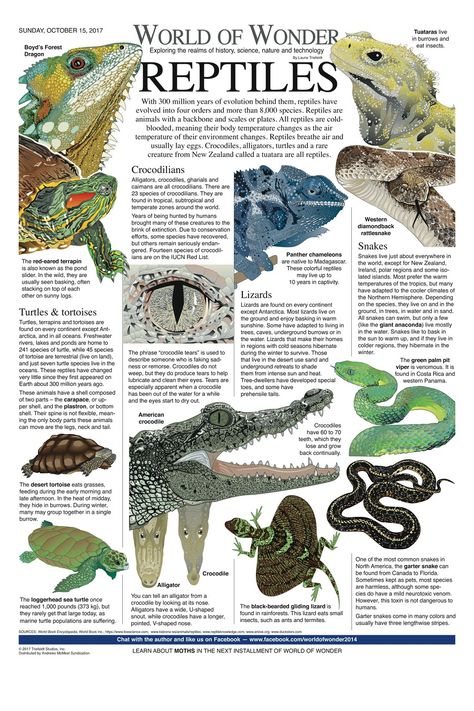How to feed baby garter snakes
How to Get Baby Garter Snakes to Eat
Baby garter snakes are tiny. When they’re newly born, they may be only 6 inches long, and no thicker than a pencil. They are notoriously fussy eaters, so getting them to eat food can be quite a challenge for new owners.
Baby garter snakes can be fed a varied diet of sliced earthworms, pinky parts, and cut pieces of fish. However, you may have to wiggle the prey in front of the snake’s nose to encourage it to eat. Some juveniles are shy and prefer to be left alone while they consume their meal.
Feeding baby garter snakes can be difficult because they’re too small at this stage for regular snake foods. If this is the first time you’re feeding your baby garters, the chances are they’ll be even fussier. Some juveniles may also have trouble recognizing what they’re being fed.
How to Feed Baby Garter Snakes
Baby garters don’t have the same meal size requirements as adults. Some juveniles are particular about their food, and how their meal is presented.
Your garter may be disinterested in freshly-sliced worm just because it doesn’t move. Many animals avoid eating dead prey, which is actually why garter snakes play dead when threatened. Some snakes prefer fish over worms, or vice versa. Here are some common problems and solutions:
| Refuses cut-up fish and worms | Feed it live earthworms |
| Refuses cut up pinky mice | Rub fish juice over mouse pieces |
| Food fights | Individual feeding |
| One snake eating the food | Feed snakes separately |
| Lack of appetite | Increase the temperature of the tank |
| Snake is shy about eating | Leave the meal overnight |
What Do Baby Garter Snakes Eat in Captivity?
Baby garters can be particular about what they eat, especially when you first bring them home. You may have to feed it small pieces of fish, earthworms, platies, and feeder guppies.
You may have to feed it small pieces of fish, earthworms, platies, and feeder guppies.
Fish
Most garters will eat any type of fish, but owners need to be careful with fish because many contain high amounts of thiaminase. Thiaminase is an enzyme that breaks down vitamin B1 (thiamine).
Note: According to the Journal of Great Lakes Research, the consumption of thiaminase can cause vitamin B1 deficiency, resulting in illness and death. Examples include goldish, anchovy, chubby mackerel, and tuna.
Worms
Whole worms, such as bait-store nightcrawlers, are too big for baby garters, unless you cut them up into smaller pieces.
Smaller worms, such as the ones in your garden, could be the right size and many babies love them, especially if they’re still moving.
Mice
A diet of mice provides all of the nutrition that a baby garter snake needs. Try feeding your baby garters very small pinky parts. You may have to slowly transition your snakes to a rodent-based diet by continuing to feed it fish and worms every now and then.
If your baby garter snake has a preference for fish and refuses to eat pinky parts, you can entice it by scenting the pinky parts with fish. Rub some fish juice or a piece of fish against the pinky after cutting it up.
If a fish-scented mouse meal still doesn’t work, try offering your snake a dish with pieces of fish and pinky mice to spark its appetite.
What To Do if a Baby Garter Snake Won’t Eat
Just because you have the right types of food for a baby garter snake, this still doesn’t mean that it’ll eat its meal.
A large part of the problem is connected to the way that the food is prepared or presented to your snake. The following can help:
Defrost Food Thoroughly
If you’re using frozen pinkies or fish, always thaw the food out before offering it to your snake.
You can do this by placing the food item into a cup of warm (not hot) water. Leave it there until it’s soft and slightly warm.
Size the Food Appropriately
Regardless of the food, you must make sure it’s small enough for your baby garters to eat. It should not be much wider than the thickest part of the snake’s middle.
It should not be much wider than the thickest part of the snake’s middle.
If the food is too large, your snake won’t recognize it as prey. Newborn garter snakes won’t be large enough to eat whole pinkie or large worms straight away. Chop up their food into smaller pieces.
Always Feed Snakes Separately
Even if your baby garter snakes are housed together, you will have to feed them separately to avoid accidental cannibalism and fights. Some greedy snakes may take all the food, causing others to starve.
Individual feeding can be tricky if you have a large number of babies. However, you can use deli-cup containers to make the feeding process easy. Insert one portion of food per cup and place the cups outside the cage. Take the snakes out of their home and place one in each container.
Individual feeding is more time-consuming and labor-intensive than just dropping a dishful of food into a cage. However, feeding snakes separately is healthier, safer, and ensures that each snake is fed.
Mimic the Movement of Live Prey
Most captive snakes don’t mind being fed a diet of pre-killed prey. However, some garter snakes expect their food to move. Garter snakes are much more visually oriented. This means that a garter snake that prefers live prey may not eat anything that doesn’t move.
If you’ve been offering your snake cut up nightcrawlers or fish fillet, try feeding your juvenile garter snakes small earthworms from your yard. Make sure they’re alive and still wriggling.
You can tempt your snake to eat by wriggling its food with a pair of tongs. Continue moving the food close to your snake’s mouth until it strikes and grabs its meal. Snake owners call this technique “tease-feeding.”
Tease-feeding works well with small mice but it can be an issue if you’re using small, fragile pieces of fish. Cut up pieces of pinky mice work much better when you’re handling them with tongs, forceps, or tweezers.
Overnight Feeding
Some baby garter snakes may not eat when you’re around. Furthermore, some don’t require tease-feeding and may even eat pieces of mice without needing to be coaxed. However, they prefer to eat overnight and privately.
Furthermore, some don’t require tease-feeding and may even eat pieces of mice without needing to be coaxed. However, they prefer to eat overnight and privately.
You may come across a garter that poses multiple challenges. The snake may want its meal to move but will not eat when you’re present. In such cases, you can’t use fish-scented pinkies or frozen-thawed fish.
Earthworms or live fish may be your only option. Oftentimes, snakes solely on worm and live fish diets end up getting parasitic infections, which can lead to an early death.
Temperature of The Tank
A snake’s metabolism changes based on the temperature of its living environment. If the snake’s tank is too cold, it cannot digest its food, so it will likely avoid eating its meal.
If your snake’s home is too cold, you need to optimize it based on your species of snake. Garter snakes require a basking area that’s 90-95 degrees. This can be achieved with a heat lamp or heat mat.
How Long Can a Baby Garter Snake Go Without Eating?
Snakes are resilient when it comes to going without food. According to Zoology, snakes can adjust their metabolic rate when food is lacking, allowing some species to live up to 2 years without any food.
According to Zoology, snakes can adjust their metabolic rate when food is lacking, allowing some species to live up to 2 years without any food.
However, the younger the snake, the less time they can go without eating food. Baby garter snakes will start to lose weight and deteriorate in health after just two weeks, so you need to get your baby garter snakes to eat.
Force-Feeding Baby Garter Snakes
Force-feeding should always be a final resort. If you have experience in force-feeding snakes, you may be able to get your baby garter snake to eat by opening its mouth and placing the food inside.
For most beginner snake owners, a common problem with feeding snakes is expecting it to eat when it doesn’t want to. If a snake is brumating, is about to shed its skin, or is kept in a cage where the temperature is too low, it may not have much interest in food.
If your snake still refuses to eat, consult a vet for expert advice. They will be able to show you how to force-feed baby garter snakes, if considered necessary. Use this complete guide on how to raise baby garter snakes.
Use this complete guide on how to raise baby garter snakes.
MLA Style: Carter, Lou. "How to Get Baby Garter Snakes to Eat" Snakes For Pets, (January 21, 2021), https://www.snakesforpets.com/how-to-get-baby-garter-snakes-to-eat/.
APA Style: Carter, L. (January 21, 2021). How to Get Baby Garter Snakes to Eat. Snakes For Pets. Retrieved January 21, 2021, from https://www.snakesforpets.com/how-to-get-baby-garter-snakes-to-eat/
Raising Baby Garter Snake (in 5 Really Easy Steps)
Whether looking after baby garter snakes by intention or otherwise, you need to know how to proceed. This flighty genus of snake (Thamnophis) requires special care and attention. Raising garter snakes can be extremely rewarding, as long as you know what you are doing.
Prepare a 5-gallon tank for your baby garter snakes. Feed the snakes separately, ideally encouraging a diet of mice. Get these nervous snakes used to handling without musking and biting.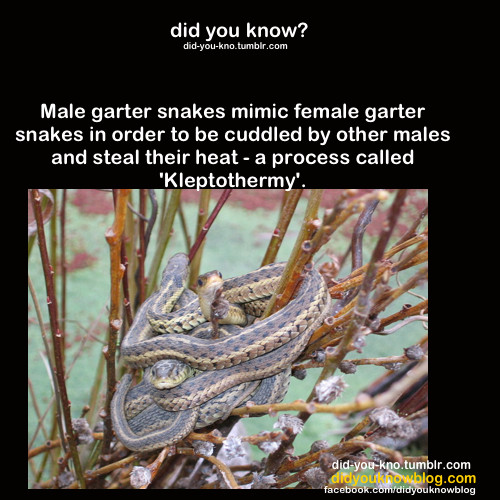 Watch out for health concerns, such as trouble shedding or skin blisters.
Watch out for health concerns, such as trouble shedding or skin blisters.
Garter snakes prefer to live in pairs or groups. You will need to be mindful of sexing your groupings, though. If you have housed a male and female garter snake together, premature breeding will occur.
The female garter snake will give birth to live young. The average number of babies is between 15 and 20. That’s a lot of small snakes, so be prepared.
1/ Tank Requirements
Unlike most breeds of snake, garter snakes actively prefer to live in groups. This reduces stress, especially for those born in captivity. Babies can thrive alone, but they’re happiest among others of their own species.
A tank for baby garter snakes should measure 5 gallons. This will provide enough space for all the snakes. If you only have 1 baby snake, you can halve this size. As the snakes grow older, you will need to upsize.
Provide multiple hiding places for the snakes. This will keep them feel comfortable. At least one of these hiding places should be moist to aid with shedding. The rest of the enclosure should be relatively dry.
This will keep them feel comfortable. At least one of these hiding places should be moist to aid with shedding. The rest of the enclosure should be relatively dry.
Provide at least 1 bowl of water, which must be refreshed daily. This is not just for drinking. The snakes will also bathe in this water to prevent drying out, promote shedding and remove snake mites.
One end of the enclosure should contain a basking lamp. This should reach temperatures of around 86 degrees Fahrenheit. The rest of the enclosure should be cooler. An ambient temperature of around 72 degrees Fahrenheit suits garter snakes well. This is known as the temperature gradient.
Add climbing branches and decorations if you wish. The snakes are likely to be indifferent, though. Garter snakes are not natural climbers. They prefer to burrow, which should be reflected in your choice of substrate.
Two inches of aspen bark is typically ideal. This will need to spot-cleaned daily as snakes eliminate in their substrate. If your snakes are eating worms, their feces will be watery and foul-smelling. A full change of bedding will be required about once a week.
If your snakes are eating worms, their feces will be watery and foul-smelling. A full change of bedding will be required about once a week.
As garter snakes are social, they are unlikely to display cannibalistic behaviors. The exception to this is during feeding time. Never feed garter snakes together. Instead, you should always use separate containers.
2/ Food And Diet
A wild garter snake will hunt frogs and toads for food. Baby garter snakes will start eating tadpoles before graduating to full-grown amphibians.
Pet stores rarely stock frogs as a food source. Instead, feed your baby garter snakes earthworms, slugs, or mice. It will be a while before the snakes are big enough to eat a mouse whole, though. Perhaps start with worms and move on to mice as your snakes grow in size and stature.
Feed your snakes one at a time in a separate location. Don’t just offer 3 worms for 3 snakes and walk away. Brasher, more confident snakes will outmuscle weaker, more bashful counterparts.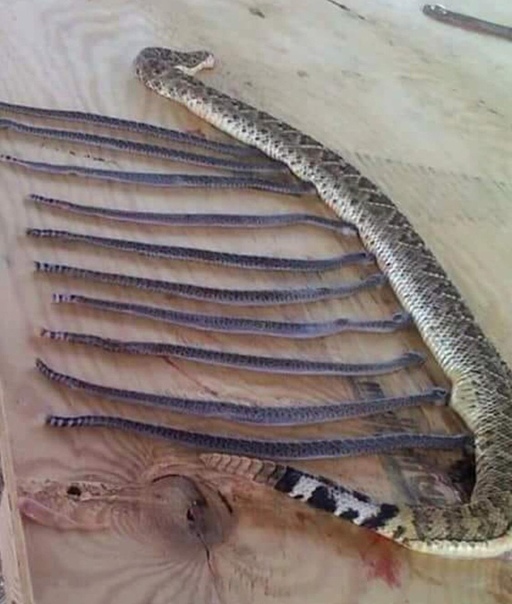 Some snakes will become overweight and others will go hungry.
Some snakes will become overweight and others will go hungry.
Baby garter snakes should be fed little and often. Divide food portions up, offering a small meal every other day. You can tell if your snakes are sated by their shape. A baby snake should have a slight bulge in its stomach.
Earthworms and Slugs
Earthworms are a popular food choice for baby garter snakes. It’s best to get worms from a pet store or dealer. Worms found in a garden may host parasites or toxins. In addition, red wriggler worms are toxic to snakes.
The best worms for baby garter snakes are nightcrawlers. Check fishing bait stores for these worms. They are large and muscular, though. Too big for some baby garter snakes. Chop these worms into quarters.
While most garter snakes will eat worms, they are not filling or nutritious. Worms do not offer much calcium either, so you may wish to offer a supplement. Be warned, worms also lead to watery, smelly feces.
Slugs are more nutritionally balanced, but harder to find. As with worms, don’t simply catch slugs from the yard. They may have eaten toxic slug repellent. Order these from a reputable dealer.
As with worms, don’t simply catch slugs from the yard. They may have eaten toxic slug repellent. Order these from a reputable dealer.
Mice (Pinkies)
A captive snake will gain full nutrition from mice. The challenge arises in convincing the snake to eat frozen-thawed rodents.
Obviously, the rodent should be thawed first. A live mouse will be more appealing as garter snakes like their prey to move. However, a live mouse will fight a snake, which could result in injury or worse.
A baby garter snake will be too small to eat a full mouse, even a pinky. You’ll need to cut the mouse up before feeding. One full mouse, whether fed whole in or in pieces, will sustain a young garter snake for a week.
Feeding mice is not for everybody. Some people choose garter snakes as pets as they do not need to eat mice. If they will not accept worms, attempt feeding mice. If the snake remains fussy, try wiggling it about to simulate signs of life in the prey. That usually gets baby snakes eating rodents.
3/ Snake Handling
Garter snakes, especially those born in captivity, tend to be docile. This means that these snakes will tolerate handling well. If you condition them as babies, garter snakes can even learn to enjoy handling.
You should get your baby snakes used to being handled. This isn’t just for fun. You will need to handle your snakes on occasion. The snakes will need to be moved when their enclosure needs to be cleaned. Baby garter snakes must also be separated at feeding time.
Baby garter snakes are nervous and flighty. When you first start handling, the snake is likely to resist. Garter snakes aren’t constrictors, so they will not wrap around your hands or body. Instead, the snake may thrash around and try to escape.
Be mindful of this as your snake could fall and hurt itself. Move your hands and avoid allowing it to slip through your fingers. Understand the signs of a frightened garter snake, such as musking and biting.
Most baby garter snakes will accept handling once they learn to trust you. Some will remain skittish, though. If this is the case, do not force the snake into handling. A nervous snake should only be picked up when necessary.
Some will remain skittish, though. If this is the case, do not force the snake into handling. A nervous snake should only be picked up when necessary.
Musking
Garter snakes musk more than any other breed. This is a form of self-defense. Garter snakes are small, nonvenomous and have tiny teeth. This makes them easy pickings for predators in the wild.
If you are handling a baby garter snake against its will, it will musk. This involves releasing a foul smell from a vent in the snake’s tail. The snake may release feces at the same time.
Garter snake musk is unpleasant, but it is not harmful. The snake is frightened. Put it down and re-attempt handling training at a later date.
As explained by The Journal of Herpetology, female garter snakes have stronger-smelling musk than males. However, the musk produced by a female garter snake is not toxic.
Biting
Biting is usually the last resort for a frightened garter snake.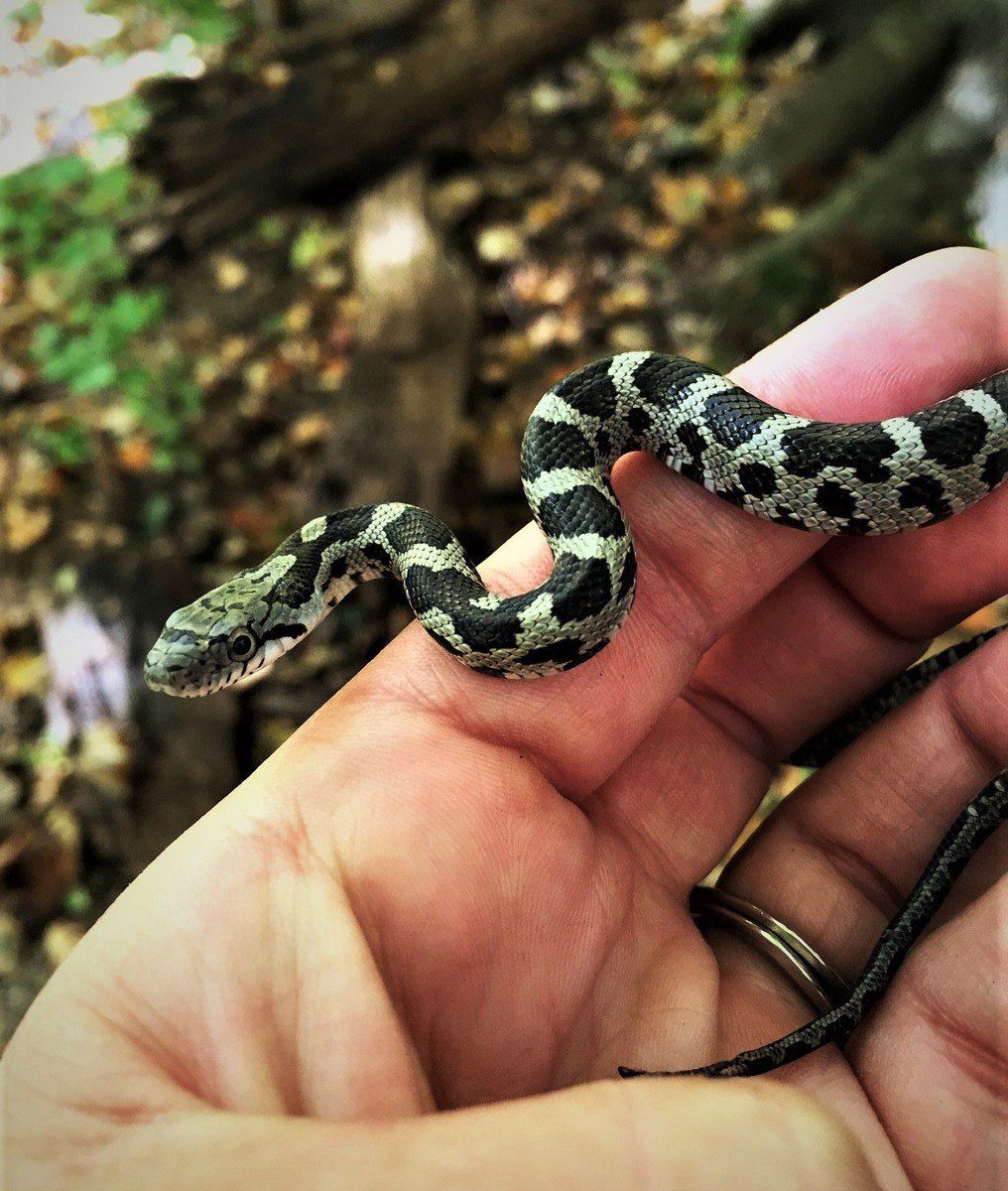 If you have been bitten, ensure the snake is not simply hungry and confused.
If you have been bitten, ensure the snake is not simply hungry and confused.
If the snake will not relinquish its jaws, gently push the head forward. You are trying to remove the snake’s teeth from your hand, which point backward. Too much force could cause the teeth to break.
A bite from a garter snake is unlikely to cause problems. Most of the time, it will not break the skin. Just be aware that their saliva can provoke an allergic reaction, but this is very uncommon.
4/ Health And Wellness
Clean their enclosure regularly to avoid the risk of bacteria. A single snake will need its enclosure cleaned once a week.
Obviously, if you have multiple baby garter snakes in a tank, it will get messy faster. More snakes equal more feces.
Aside from basic cleaning, keep an eye on these three common health concerns with baby garter snakes.
Shedding Problems
A baby garter snake will shed its skin for the first time around 10 days after birth. A snake ready to shed will not eat, temporarily lose its sight, and hide more frequently. The snake may also be moodier and bite.
A snake ready to shed will not eat, temporarily lose its sight, and hide more frequently. The snake may also be moodier and bite.
Provide some rough material on the ground of your snake’s enclosure. As the garter snake slithers over these, it will pull off its old skin. If this does not help, the humidity in the enclosure is too low.
Provide a damp washcloth in a shedding box. A snake will curl up on this and soften the skin. A separate humidifier may also be necessary.
Internal Parasites
Internal parasites can kill garter snakes. Often, these are caused by diet. Wild garter snakes carry a range of parasites that are passed on by their prey. This is why you should not feed your baby snakes anything you find in your yard. Always get food from a reputable supplier.
Be vigilant about looking out for intestinal worms. Pinworms, tapeworms, and roundworms can set up camp in a snake’s lungs. Unfortunately, these parasites rarely show symptoms. Look out for small lumps on the surface of the snake’s scales while handling. Listen to the breathing of the snake and check for signs of popping. If so, there’s likely a lung issue.
Listen to the breathing of the snake and check for signs of popping. If so, there’s likely a lung issue.
These symptoms suggest the presence of intestinal worms. Anti-worming medication should be your first step. Consider making anti-worming meds part of your snake’s regular routine as a precaution. In addition to feeding the right food, consider freezing it for 30 days then thawing. This will kill any potential parasites.
Thiamine Deficiency
You may have noticed that we have not recommended fish as snake food. Some pet stores will suggest fish as nourishment for your baby snakes. This is especially likely before they are ready for mice.
It’s true that baby garter snakes enjoy fish. This is a risky meal, though. In addition to the presence of parasites discussed above, fish can cause thiamine (Vitamin B1) deficiency. Not even freezing fish in advance will resolve this issue.
Thiamine deficiency leads to a lack of control for the snake, including convulsions. If you spot these behaviors, get some thiamine into a garter snake. Consider feeding it some liver.
If you spot these behaviors, get some thiamine into a garter snake. Consider feeding it some liver.
In the aftermath, stop feeding fish to the snake at once. If the baby garter snake is now too big for earthworms, switch to mice.
Mites
Mites are tiny so, unless you are actively looking, they may go unnoticed. This irritation is usually the first warning of a mite infestation.
Left untreated, mites can kill a snake. They gather around areas where the scales are thinner, constantly feeding on the snake. Eventually, the snake will lose a lot of blood and become too weak to carry on.
You could try drowning the mites, but this isn’t easy. If a snake is submerged in shallow water, this will reduce the number of mites temporarily.
If one baby garter snake has mites, the whole litter is at risk. All must be attended to. Treatment for a mite infestation is as follows:
- Fill a tub of water treated with an antiseptic. Betadine is snake-safe.
- Encourage each snake to submerge in the water
- Pat the snakes down with an antiseptic washcloth.
 Pay particular attention to the eyes without getting any medication in the eyes.
Pay particular attention to the eyes without getting any medication in the eyes. - Dry the snakes off
- Place the snakes in another tank with plain, clean paper as a substrate.
- Thoroughly clean the primary enclosure. Remove all substrate and disinfect all surfaces.
- Bake any wooden decorations and boil any rocks. This will kill mites that have fled to these furnishings.
- Leave to dry in the sun, ideally for at least 24 hours.
- Replenish the enclosure, return the snakes, and monitor them carefully for at least 6 weeks.
Better yet, though, is prevention. Clean your snake enclosure regularly and do not mingle your snakes. Wild reptiles – and food sources – or show snakes at expos could be carrying mites. Protect your snakes by keeping them isolated.
Skin Blisters
Garter snakes are not aquatic. They need to live in dry conditions. If a garter snake rests on a wet surface, it will develop blisters on its skin. Ensure the snake’s habitat is dry, aside from a small water bowl for bathing.
This is a delicate balancing act with baby garter snakes. It is possible for a young garter snake to dry out, which is why a shedding box is so useful.
Refusal to Eat Food
Some baby garter snakes are fussy eaters. If this occurs during the winter, the snake may be choosing to brumate.
If the snake is graduating from worms to pinkies, rub a worm on the mouse. The scent will attract the snake, and it will accept the mouse as food.
If this does not work, take a needle and expose some of the brain of the mouse. This will smell fresh in comparison. Not all garter snakes like frozen-thawed food. This is not nice work, but it may work.
If not, encourage the snake to play with its food. Nudge the mouse against the snake’s mouth with tongs. This will lead to a biting reflex as all snakes prefer to consume live prey. This will likely lead to eating.
5/ Brumation
Brumation is the reptile equivalent of hibernation. A snake cannot digest food in cold temperatures.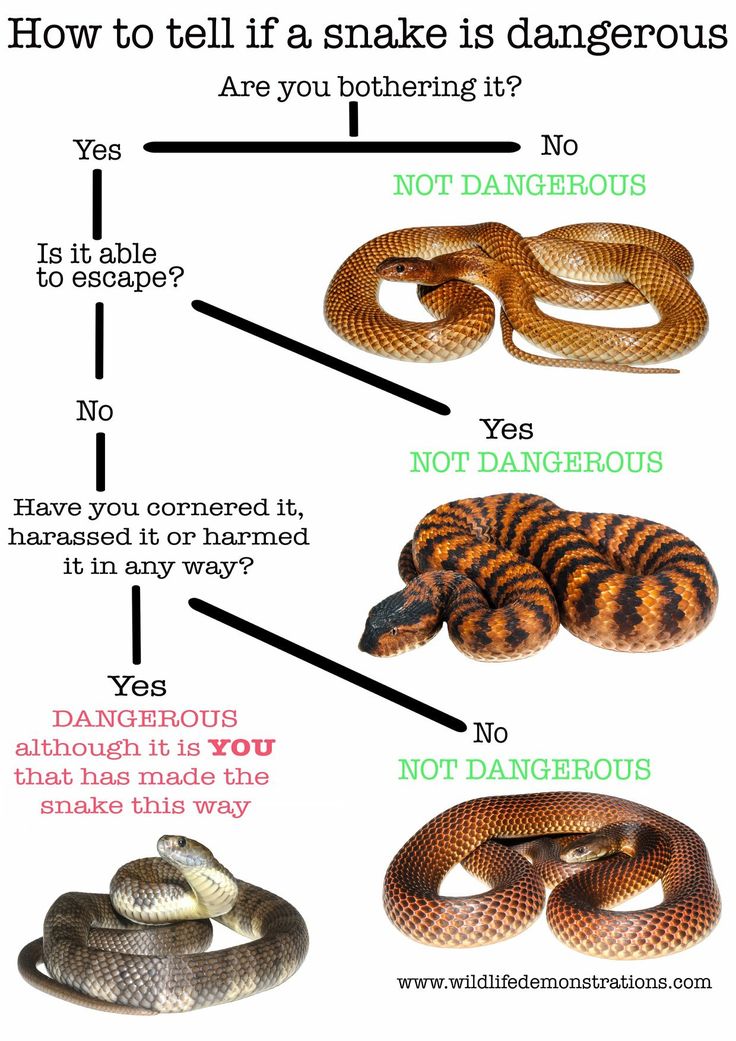 They manage to survive this as their metabolism has slowed down so much.
They manage to survive this as their metabolism has slowed down so much.
Some babies will willingly decide to brumate. They will stop eating, choosing to sleep and hide. Never force an unwilling snake to eat in the cold. The food will start to decay before it is digested, which can be lethal.
If a snake refuses to eat, put it into brumation. You may find that some baby garter snakes choose brumation and others do not. In this case, move the snakes that wish to brumate into smaller accommodation.
Before beginning brumation, allow the snake to bathe in lukewarm water. This will encourage defection, flushing any remaining food from the digestive tract.
For a snake to brumate, it needs colder temperatures. Not too cold – anything below 40 degrees Fahrenheit will be fatal. Aim for a temperature between 50-60 degrees. A basement, shed or attic is safer, assuming there are no draughts.
Check the ambient temperature, ensuring it is not too warm. If the temperature is too hot the snake’s metabolism will remain active. Without food, this is harmful. The snake will lose more weight than is safe.
Without food, this is harmful. The snake will lose more weight than is safe.
If you are comfortable raising baby garter snakes, follow these steps. Once the garter snakes reach 2 years of age, they will be sexually mature. Refer to our complete guide to caring for garter snakes as pets for more info.
MLA Style: Carter, Lou. "Raising Baby Garter Snake (in 5 Really Easy Steps)" Snakes For Pets, (January 21, 2021), https://www.snakesforpets.com/raising-baby-garter-snake-in-3-really-simple-steps/.
APA Style: Carter, L. (January 21, 2021). Raising Baby Garter Snake (in 5 Really Easy Steps). Snakes For Pets. Retrieved January 21, 2021, from https://www.snakesforpets.com/raising-baby-garter-snake-in-3-really-simple-steps/
Garter snake, or common garter snake | zoo-ekzo.com
Gener Snake Ordinary, or Garter already ( Thamnophis Sirtalis )
Grade
detachment-Castle
Gender 9000 9000 9000 9000 9000 9000 9000 species
Quite a large snake - body length up to 1. 3 meters.
3 meters.
The body is very slender, long. The head is slightly expanded. The pupil is round. The main tone of the color is cream or light gray. Wide dark stripes run along the sides of the ridge. On a dark background, a pattern of longitudinal red stripes or spots is expressed. On the sides of the wide stripes, narrow, one or two black stripes may pass. Red or black spots are often located between the stripes.
Habitat
Lives in the USA, Mexico and southern Canada.
Inhabits damp habitats, mainly along the banks of water bodies.
Lifestyle
Lead a daily lifestyle.
Garter snakes, due to their small size, heat up and cool down quickly. Like most reptiles, garter snakes bask in the sun, they also tolerate cool (up to 16 ° C) and high (34 ° C) temperatures well. Snakes tend to maintain their body temperature within 22-32 °C.
Most garter snakes hibernate during the cold season.
When spring comes, overwintered snakes need two to three weeks to warm up. At this time, the snakes are inactive, occasionally making forays out of the hole, but returning at night to avoid the still cold night temperatures.
The diet of snakes includes both traditional frogs and their tadpoles, as well as toads, newts, salamanders, fish, lizards, mice, shrews, small birds and even snails, earthworms, spiders and various insects.
Reproduction
As early as 8 to 12 months of age, garters can bear offspring, giving birth (not laying eggs) from 8 to 62 live cubs. Babies have a length of 130 to 220 mm and a weight of about 2 g. Pregnancy lasts 67-78 days, while the female actively feeds and quickly gains weight.
Captive keeping
The moderate size of the snake makes it possible to keep it even in a small terrarium. A terrarium with a size of 560X560X550 mm is suitable for their maintenance. Temperatures in the terrarium are 26°C in a cool corner and 38°C under a lamp. The duration of daylight hours is 12 hours. At night, the light and heating are turned off.
Temperatures in the terrarium are 26°C in a cool corner and 38°C under a lamp. The duration of daylight hours is 12 hours. At night, the light and heating are turned off.
Snakes are fed once a week at the rate of 30-50 g per individual. Water in the drinker should be constantly. Garters eat almost everything: earthworms, false horse leeches, small crayfish, river and sea fish, tadpoles, newts, salamanders, frogs, toads, small rodents and birds, meat.
I stimulate the reproduction of garters by lowering the temperature to 4-12 °C. In spring or autumn, snakes can be taken out in small plexiglass jars to the balcony. Three weeks before the “wintering”, they stop feeding the animals, turn off the heating and keep the snakes at room temperature (18-20 ° C), then cool them for 10-14 days . You can use compartments for vegetables and fruits of domestic refrigerators.
Males are the first to come out of the winter and give them time to get used to the heated terrarium. Then the female is planted. Mating usually occurs after 5-10 minutes.
Then the female is planted. Mating usually occurs after 5-10 minutes.
It should be noted that mating in garter snakes is often observed without stimulation, however, overwintered parents give stronger and larger offspring. The best starter food is small fish (guppies, platies, zebrafish, etc.)
The whole truth about snake sex: it is not what we thought
- Sandrine Serstimont
- BBC Earth
Sign up for our 'Context' newsletter to help you understand what's going on.
Photo by Sven Zacek/naturepl.com
Scientists are used to thinking that male snakes play a dominant role in sexual intercourse, and females are mostly passive, but how wrong they were!
When Jesús Rivas took the female anaconda out of the mating ball of snakes, he was in for a surprise.
The swollen body of the anaconda indicated that she was extremely full, and Rivas believed that she was about to burp - snakes often burp some of the food if they have eaten too much or are stressed.
And what did Rivas see? Instead of the usual prey - a rat or other rodent - the tail of another snake appeared from the anaconda's mouth.
"It was also an anaconda," says Rivas, a herpetologist from Las Vegas. "And judging by the sexes, it was a male."
- Who has the largest spermatozoa on the planet
- Do animals enjoy sex?
- Octopus sex. How not to get eaten by your girlfriend
- Wolf spiders eat their older females
A female anaconda swallowed one of her recent sexual partners, a sexual behavior known as "sexual cannibalism".
And this astounding case has only added evidence to a growing body of evidence that we have misunderstood how snakes have sexual intercourse.
Photo copyright, Franco Banfi/naturepl.com
Photo caption,Green (giant) anaconda (Eunectes murinus)
Among anacondas, only females engage in sexual cannibalism.
Previously, scientists believed that female snakes occupy a subordinate position during courtship and mating, but now it is clear that their role is very significant and even dominant.
Rivas suggests that the misconception stemmed from old research done by male scientists. Played a role, so to speak, gender solidarity.
Female snakes are physically large and powerful, so it's really not surprising that they can overcome and even eat a male. In many animals, the picture is reversed - it is the males that are larger, but in the case of snakes, everything is not so.
Female anacondas are on average 4.7 times larger than males. Among land vertebrates, this is the most impressive difference between the sexes.
- Move like a snake: it means - inexplicably fast
- Folk remedy for snakebite - another myth?
- Eating one's own flesh.
 Who is doing this?
Who is doing this?
The reason that males are often larger than females is that it helps them to win the fight for the female and control the territory, driving off rivals. And this is exactly the case in lizards, birds and mammals.
But the behavior of male snakes destroys this stereotype. They don't care about territorial control, and during courtship, they just push the rival away and deftly use their tail to get to the female's genitals. So for a male snake it is not at all important to be big.
Why do females need large forms? Large size improves fertility, and the offspring are larger, which increases the chances of survival. Males seem to understand this, preferring to court larger females.
But how do they make their choice? Snakes do not have very good eyesight, and it is not yet clear how a male from afar can understand how attractive a female is.
Photo credit, Tony Phelps/naturepl. com
com
A male common viper (Vipera berus) guards a female from other males. When a female snake comes out of hibernation and sheds her skin, she secretes pheromones and thereby attracts males to her. "The males just go crazy," Rivas testifies.
These pheromones seem to carry information about what the female looks like. Michael Lemaster of Western Oregon University has found evidence that the scent given off by a female garter snake can convey information about her physical size.
And although males pay attention to smaller females, as soon as a large snake is nearby, they switch to it.
Another aspect of the sex life of snakes that we have been misled about is mating.
The author of the photo, Franco Banfi/naturepl.com
Photo caption,Green (giant) anaconda (Eunectes murinus)
It was believed that the norm for snakes is polygyny, when one male has sexual relations with several females.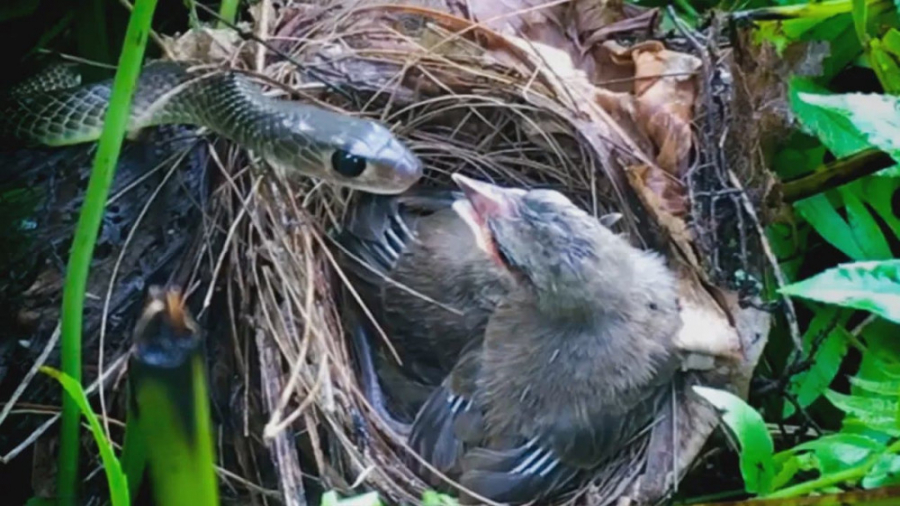 But even here everything was not so simple.
But even here everything was not so simple.
Absolutely common thing - when several males care for one female. On the island of Borneo, for example, it was possible to photograph a female paradise decorated snake, which entered into a relationship with four males.
The males relentlessly followed the female as a detachment of her admirers for 30 minutes. According to the researchers, during this sex journey, they competed for the best position for sexual intercourse.
Photo credit, Tim Laman/naturepl.com
Photo caption,Paradise ornamented snake (Chrysopelea paradisi)
Skip the Podcast and continue reading.
Podcast
What was that?
We quickly, simply and clearly explain what happened, why it's important and what's next.
episodes
End of Story Podcast
Usually, the female giant anaconda lies quietly in the mud or shallow water while the males try to find her. Sometimes a dozen promising partners come to meet each other, wrapping themselves around the female - such "orgies" last up to a month.
Sometimes a dozen promising partners come to meet each other, wrapping themselves around the female - such "orgies" last up to a month.
Rivas recalls watching a male anaconda doggedly pursue a large female, ignoring any other opportunity to mate, and eventually had sexual intercourse with her. "It was like true love," says Rivas.
With garter snakes, courtship can take even more extreme forms. In the Canadian province of Manitoba, in the area between Lakes Winnipeg and Manitoba, one can witness how one female is pursued by up to a hundred males, from which a large mating ball is formed.
Often in the crevices one can observe several such balls with thousands of snakes at once. True, this does not happen everywhere with garter snakes. You won't see this in the continental United States, Rivas says. It is not very clear why, but it seems that the environment and geography strongly influence the behavior of snakes.
The problem with these mating cups, Rivas says, is that it's very difficult for scientists to determine which males end up producing offspring.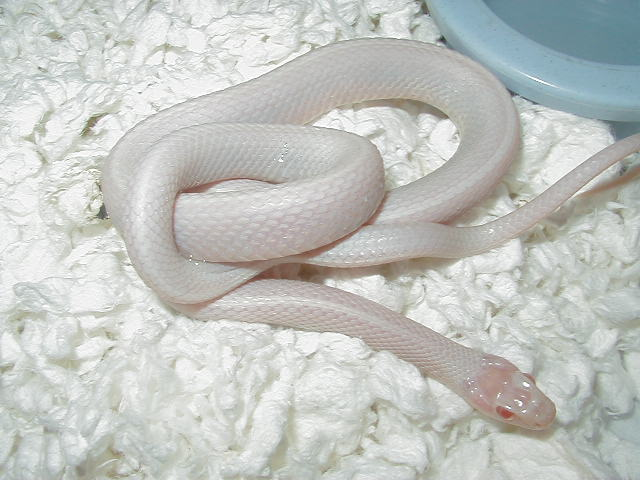 One thing is clear - since there are many males in such "orgies", the female must make a choice.
One thing is clear - since there are many males in such "orgies", the female must make a choice.
Image copyright Francois Savigny/naturepl.com
Image captionAnaconda mating ball (Eunectes murinus)
"In the end, it's the female who decides when to open her cloaca to the male," says Lemaster, who studies garter snakes . Females use genital contraction to control the duration of sexual intercourse and may interrupt it if they consider that the male is not coping with his duties.
It is still not completely clear what exactly females are guided by when choosing one or another male. Scientists suggest that after all, either the strongest or the most persistent is selected to ensure healthier offspring.
However, another element may play a role in the process of "female" choice. According to Rivas, females use their sense of touch to distinguish between males. To understand how this happens, video filming of processes within the mating group can help.
In any case, it is clear that females do not necessarily choose only one "groom". Often they have sexual intercourse with several males. And contrary to previous beliefs, males usually stay with one female.
Photo copyright, Huw Cordey/naturepl.com
Photo caption,Garter snakes (Thamnophis sirtalis parietalis) in mating season
"It takes a lot of effort for a male to find and win over a female," explains Rivas. In his opinion, polyandry (when each of the females has sexual intercourse with several males) is inherited in snakes.
How did it come about? One suggestion is that sex with multiple males helps the female build up a supply of seminal fluid that she can use to feed.
But Rivas still believes that sexual intercourse with many males, the competition of different sperm provide some guarantee of healthier offspring.
Females can store sperm in the reproductive tract for months or even years, and it remains competitive even when fresh.
Photo copyright, Huw Cordey/naturepl.com
Photo caption,Garter snakes (Thamnophis sirtalis parietalis)
Does all this mean that the role of males in mating snakes is very limited and comes down to a very specific duty?
Female garter snakes that have just had sexual intercourse secrete a special pheromone that lets the males know: don't waste time, you are no longer interested in me.
However, some males are also very active. Let's say males of the same garter snake secrete some substance that blocks the female's genital tract after intercourse. This so-called copulatory plug is apparently a way to prevent a female from having intercourse with other males.
These plugs are not 100 percent effective, they often just fall out. But they may have another function - they may be a store of sperm, which is gradually released into the body of the female, as the cork dissolves.
The fact that, say, a male anaconda tries to stay longer near his "lover" can be explained by the fact that he is trying to be the last one to have sexual intercourse with her. This increases the chances that it is his sperm that will win in the fight for offspring.
This increases the chances that it is his sperm that will win in the fight for offspring.
However, returning to the beginning of our story, it should be noted that staying too long with a friend is also dangerous - and even deadly: she can just eat.
Photo copyright, Sven Zacek/naturepl.com
Photo caption,Common snakes (Natrix natrix) - male and female
it or not. "It would be interesting to know if there is something about a particular male that makes him more vulnerable to that outcome," Rivas muses.
Sexual cannibalism helps female anacondas get additional nutrients, which is very useful, considering that during pregnancy they starve for seven months.
There are still many mysteries in the reproductive behavior of snakes. Partly because snakes themselves are mysterious creatures and lead a lifestyle hidden from human eyes.
But from what we know, we can conclude that the mating behavior of snakes is very similar to spiders.